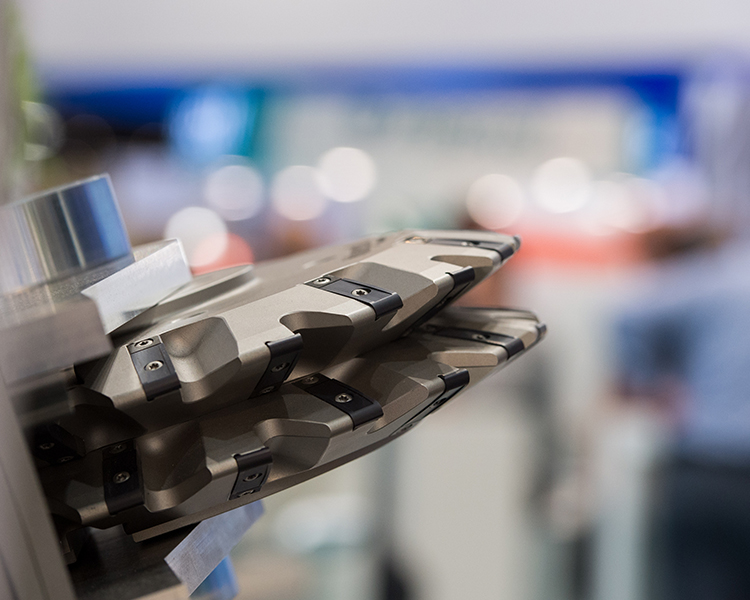Forward from The FABRICATOR
By Lincoln Brunner
Show features rich blend of current, future automation possibilities
From above, the show floor at Automate 2025 looked like a huge high-tech terrarium: part smart factory, part anthill. The booths full of robots made for a living floor map of motion within motion: clusters of shiny sticks and claws picking, placing, reaching, and waving as an army of ants coursed organically around them.
Automate, held May 12-15 at Huntington Place in downtown Detroit, brought together more than 40, 000 attendees and 800 exhibitors, according to the show's sponsor, the Association for Advancing Automation (A3). In addition to keynote addresses and panel discussions from industry analysts, the show featured more than 200 presentations on everything from interoperable digital twins to machine learning to elevating safety standards for humanoid robots.
On the floor, the picture that emerged from exhibitors was just as wide-ranging: numerous booths featuring autonomous mobile robots and robotic arms ready for deployment as well as next-wave
software to help businesses simulate entire factories before a single shovel of dirt is turned. And while much of the technology being touted centered on tools that can be purchased and used today, it was clear that automation itself is evolving capabilities faster than it can be adopted by the masses.
Humanoids in a Box
Perhaps no one at Automate demonstrated that hype-vs.-reality state of automation better than Digit the humanoid robot created by Salem, Ore.-based Agility Robotics that was making its debut appearance in Detroit.
Unlike the sci-fi hype surrounding industrial mobile (humanoid) robots, there were no talking robots walking down the aisles, serving drinks, welding parts, or anything that resembled free-range movement.
Instead, inside a plexiglass cage at a booth dwarfed by the likes of FANUC and Universal Robots, Digit performed tasks like bending down, picking up a bin labeled “CAR PARTS, ” placing the bin on a rolling ramp, and walking from station to station within its cell.
Digit—the lone humanoid robot on display at the show—is now in its fourth iteration and looked ready for prime-time work. But unlike its AMR cousins rolling freely about many booths, Digit will have to stay in that cage for the time being—that is, until the International Organization for Standardization fully establishes safety protocols like ISO 25785-1, the new safety standard for humanoids being developed by a committee that includes Agility Robotics Project Leader Kevin Reese as well as representatives from A3 and Boston Dynamics (a completion date has not been determined).
Humanoids like Digit use large language models (the foundation of Al icons like ChatGPT) to decipher voice commands and take appropriate action based on their environments. They can perform complex tasks, like picking up pieces of trash and placing them in different receptacles, but they can’t vet be set free to do those tasks autonomously on a factory floor. Why? It all has to do with dynamic stability—in other words, what the robot does when it runs out of power. Does it bend down? Fall over? Drop its load? While AMRs (essentially flat, self-quided boxes that are regulated by other protocols like ANSI/RIAR15.08) simply stop rolling,humanoids present distinctive challenges because of their human-like form factors.
"Right now, there are no humanoids on the market that are safety-rated to work outside of a safety cell in any OSHA-regulated environment, ” said Director of Product Marketing Amel Ali at Agility’s booth. “To truly scale and show value to our customers, they (humanoids) need to be outside of a workcell. These environments are really tricky to begin with. They're very dynamic. We need to have very specific safety standards in place to make sure that they're working together cooperatively."
Digit might be stuck in the present, but it's moving quickly toward the future—or perhaps more accurately, Digit is moving the future more quickly toward us.
"This is my third robotics company, " Ali said. “What I’ve found is that a lot of people like to use the buzzword, 'connecting islands of automation.' Digit is actually connecting thoseislands of automation. If you have a tote on an AMR, something has to take that tote off. There's still that final piece of moving one thing from one spot to another. You need to fully connect the islands of automation. I feel like this is where Digit shines.”

































